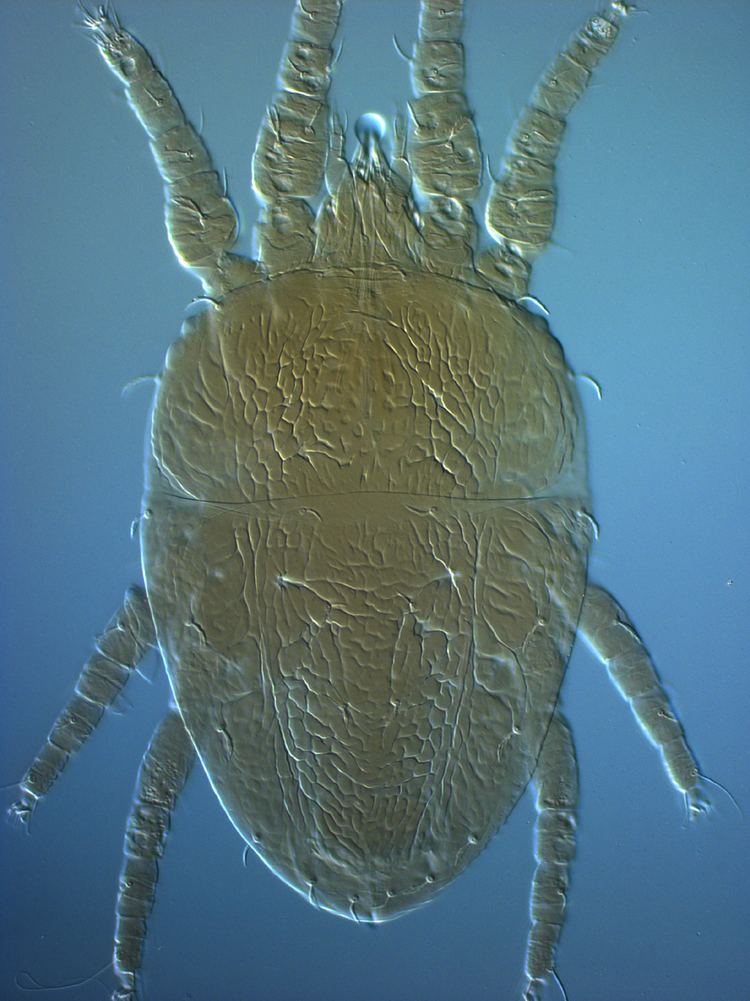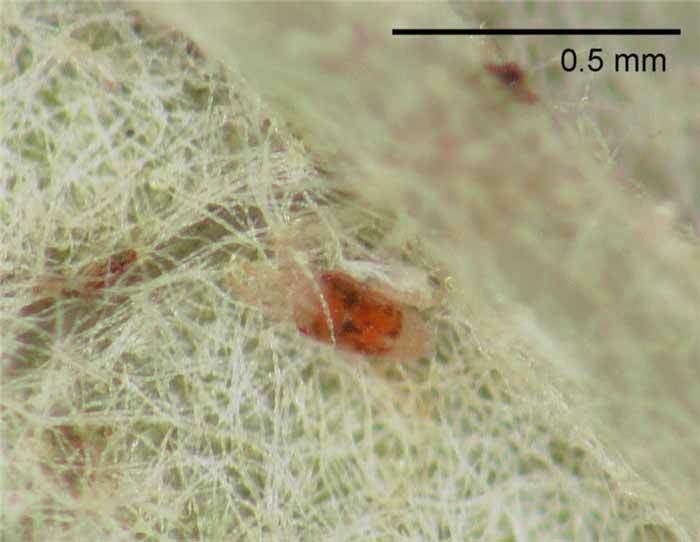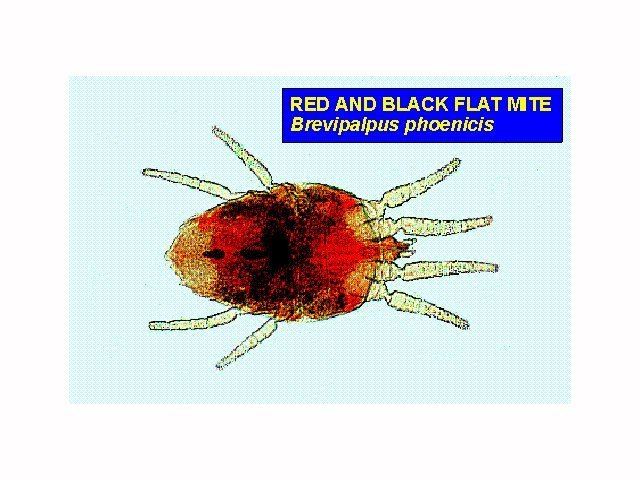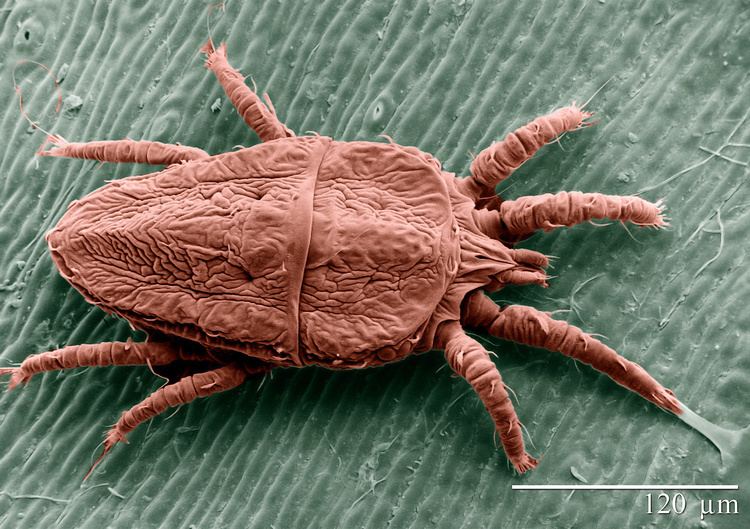Scientific name Brevipalpus | Rank Genus | |
 | ||
Similar Brevipalpus phoenicis, Tenuipalpidae, Oligonychus, Tenuipalpus, Tetranychus | ||
Genus brevipalpus
Brevipalpus is a genus of mites in the family Tenuipalpidae, the flat mites. The genus includes several species that are among the most important economic pests in the flat mite family.
Contents

Some Brevipalpus species are made up mostly of female individuals that reproduce via thelytoky, producing offspring without fertilization. Male individuals occur but often become feminized by Cardinium bacteria that colonize their bodies.

Between each developmental stage, the juvenile rests as a chrysalis on a plant.
Brevipalpus mites damage their host plants by inserting their relatively long mouthparts into the plant tissue and injecting saliva during feeding. The saliva is toxic to the plant. Damage on grapefruit, for example, takes the form of circular, discolored lesions on the fruit which darken as they become necrotic. On pistachio, Brevipalpus damage appears as scabby blotches on the leaf petioles, stems, and nuts. Furthermore, several of these mites are vectors for a variety of serious plant viruses.

Familiar species include:

Brevipalpus obovatus nymph


